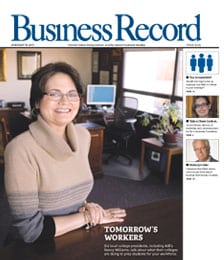Always low prices – and low-interest loans, too?

Dear Mr. Berko: My wife works at Wal-Mart and earns $352 a week, which is not a living wage. Thank goodness that I have a good job as a bank loan officer, and she doesn’t need to work. We came here from Mexico and made low Wal-Mart wages while I went to school and learned banking. Now I’m hearing that Wal-Mart wants to become a national bank. I don’t like this company, and you should tell your readers that it is a bad stock to buy. In March 2004, I bought 42 shares of Wal-Mart at $59.10, and I’m going to sell it because we are losing money. Do you think Wal-Mart will split soon? J.D., Jonesboro, Ark.
Dear J.D.: You’re right as sunshine; $352 a week is not a living wage. But if your wife doesn’t have to work, may I kindly suggest that she resign from Wal-Mart (WMT-$47.14), so another spouse whose family needs extra income can have her job? And may I suggest that if WMT offers to refinance your mortgage, saving you $65 a month over your bank’s rate, that you decline the savings? WMT has tried to get into the banking business, but the banking lobby in Washington, D.C., has done a superb job of keeping the vault doors closed. However, the banking business is a huge source of potential profits, and it’s not a question of “if” Wal-Mart will become a bank but “when.”
WMT is now offering a “no-fee” Discover card through General Electric Co.’s Consumer Finance Division with a 1 percent cash-back feature. Meanwhile, Visa and MasterCard, with their 15 percent and 20 percent rates on debt balances, are girding their loins. Wal-Mart stores are cashing payroll checks for $3, selling money orders for a half a buck and charging $9.25 for money transfers to Mexico, Guatemala and Colombia. This is WMT’s slow, gradual approach to the banking business and a prelude to savings and checking accounts, certificates of deposit, auto loans, inventory loans, commercial loans and mortgages.
The banking industry (mindful of Wal-Mart’s successes as a grocer, toy retailer, electronics retailer and jeweler) is lobbying Congress with a full-court press to stop WMT dead on the trail. Certainly middle-class America would rather seek a home mortgage from a WMT kiosk than visit a stuffy, sterile bank office! Certainly WMT’s closing costs (there are huge profits in closing costs) will be a lot less and disclosure will be much clearer. I’d have no problem seeking a Wal-Mart mortgage, opening a Wal-Mart checking account, negotiating a commercial or personal loan or purchasing a higher-yielding CD from a Wal-Mart bank.
If your bank opposes WMT’s entry, then perhaps it’s overcharging the consumer. Competition is like hot water; it keeps businesses clean.
Wal-Mart wants to get into the investment business, too. No, it doesn’t want to compete with Merrill Lynch, Smith Barney and Dean Witter. Some WMT people reckon that Social Security will be privatized in the next few years, and this is their target market. Wal-Mart wants to be the broker for Middle America’s privatized Social Security accounts and their small Individual Retirement Accounts. Wall Street brokers can’t afford to waste time helping John Doe invest $437 in an IRA or select an investment for his Social Security account. Wall Street’s high cost structure means it cannot serve this market efficiently and profitably. The WMT people believe private Social Security investments and new IRA money will account for 30 percent of the assets on the New York Stock Exchange and Nasdaq Stock Market within the coming 20 years. Wal-Mart can do what Wall Street and the big banks can’t – ignore the people with big bucks and court the folks with nickels and dimes. It can do it successfully for three reasons: No one is serving that market, it’s a huge niche, and WMT has the low-cost infrastructure in place.
I believe Wal-Mart will have revenues of a half trillion dollars in the next five to six years and that the company could post earnings of $20 billion, or $5 a share. About half of WMT’s Supercenter stores are in a dozen Southern states, so there’s still plenty of room to expand. International operations (Latin America, Asia and Europe) are strong and should generate about 35 percent of future profits. In fact, WMT’s management has identified 200 cities in Mexico where it could easily expand to maintain revenue growth. I’m told that management intends to improve net profit margins by 50 basis points (that’s huge) by focusing on global sourcing, especially in China.
I wouldn’t sell those evil WMT shares, because I believe its share price can double in the next five years and perhaps split 2-for-1.
Please address your financial questions to Malcolm Berko, P.O. Box 1416, Boca Raton, FL 33429 or e-mail him at malber@adelphia.net.







